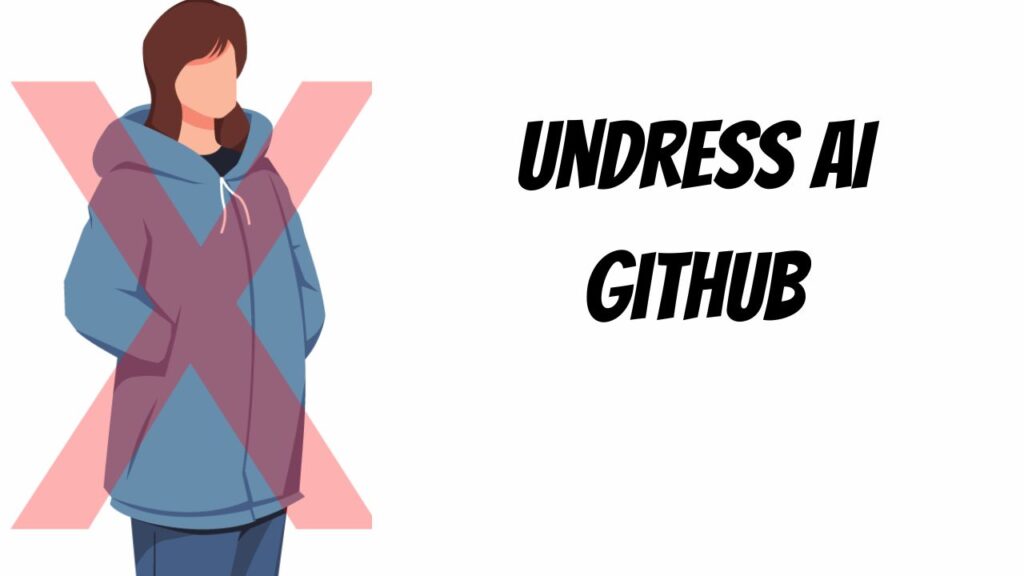Undress.AI has emerged as a revolutionary technology that leverages artificial intelligence to digitally remove clothing from images. This cutting-edge tool has sparked widespread interest and debate, as it pushes the boundaries of AI capabilities while raising important ethical questions. In this article, we will delve into the intricacies of Undress.AI, exploring its functions, applications, and potential implications.
The rise of AI-powered tools like Undress.AI reflects the rapid advancements in machine learning and computer vision technologies. These innovations have transformed industries ranging from healthcare to entertainment, but they also bring challenges related to privacy and ethical usage. Understanding Undress.AI requires a balanced perspective that considers both its technical aspects and societal impact.
As we explore this topic further, we will examine how Undress.AI operates, its potential applications, and the controversies surrounding its use. By the end of this article, you will have a comprehensive understanding of the technology and its broader implications for society.
Read also:Trinity Bandit Of The Gaming World A Deep Dive Into The Phenomenon
Table of Contents
- What is Undress.AI?
- How Does Undress.AI Work?
- Key Features of Undress.AI
- Applications of Undress.AI
- Ethical Considerations
- Privacy Issues
- Legal Implications
- Technological Aspects
- Alternatives to Undress.AI
- Future Perspectives
What is Undress.AI?
Undress.AI refers to an AI-driven software application designed to digitally manipulate images by removing clothing layers. This tool employs advanced machine learning algorithms to analyze and reconstruct human figures in photographs, creating realistic depictions of individuals without their clothing. While the technology itself is impressive, its implications extend far beyond its technical capabilities.
The development of Undress.AI aligns with broader trends in AI research focused on image synthesis and transformation. However, the specific application of this technology raises significant questions about consent, privacy, and ethical boundaries. Understanding the origins and evolution of Undress.AI provides valuable context for evaluating its role in modern society.
Origins and Development
Undress.AI was first introduced as part of a broader movement in AI research aimed at enhancing image processing techniques. Initially developed for academic purposes, the technology quickly gained attention from developers and enthusiasts who recognized its potential applications. Over time, advancements in neural networks and deep learning models enabled more sophisticated versions of the software.
How Does Undress.AI Work?
At its core, Undress.AI utilizes a combination of convolutional neural networks (CNNs) and generative adversarial networks (GANs) to achieve its image manipulation capabilities. These advanced algorithms enable the software to analyze intricate details within an image and generate realistic reconstructions based on learned patterns.
Key Steps in the Process:
- Image Analysis: The software begins by examining the input image to identify key features such as body contours, textures, and proportions.
- Pattern Recognition: Using pre-trained models, Undress.AI recognizes patterns associated with clothing and distinguishes them from underlying anatomy.
- Reconstruction: The final step involves generating a new image that replaces the original clothing with a realistic representation of bare skin.
Technical Components
The effectiveness of Undress.AI relies heavily on its underlying technical architecture. By integrating state-of-the-art AI models, the software achieves remarkable accuracy and realism in its outputs. Researchers continue to refine these components to improve performance and reduce errors.
Read also:Bart Simpson Running Into Wall The Ultimate Guide To Everyones Favorite Prankster
Key Features of Undress.AI
Undress.AI offers several distinctive features that set it apart from other image manipulation tools. These features contribute to its functionality and usability while also highlighting the complexity of its design.
- High-Resolution Output: The software produces high-quality images with minimal distortion or artifacts.
- Customization Options: Users can adjust various parameters to achieve desired results, including skin tone, lighting, and background adjustments.
- Batch Processing: Advanced versions of the software allow for bulk processing of multiple images simultaneously.
User Interface
The user interface of Undress.AI is designed to be intuitive and accessible, catering to both novice and experienced users. Key controls and settings are clearly labeled, ensuring ease of navigation and efficient workflow management.
Applications of Undress.AI
Despite its controversial nature, Undress.AI has several legitimate applications across various industries. These applications demonstrate the versatility of the technology while highlighting the need for responsible usage.
Fashion and Design
In the fashion industry, Undress.AI can assist designers in visualizing garments on virtual models without requiring physical prototypes. This capability streamlines the design process and reduces costs associated with traditional methods.
Medical Research
Researchers in medical fields may utilize Undress.AI to study human anatomy and skin conditions in controlled environments. The software's ability to simulate realistic depictions of the human body aids in accurate diagnosis and treatment planning.
Ethical Considerations
The deployment of Undress.AI raises important ethical concerns that must be addressed to ensure responsible use of the technology. These considerations encompass issues of consent, privacy, and potential misuse.
One of the primary ethical dilemmas involves the use of Undress.AI without the subject's permission. Non-consensual manipulation of personal images violates fundamental principles of privacy and autonomy. Developers and users must prioritize ethical guidelines to mitigate these risks.
Consent and Autonomy
Obtaining explicit consent from individuals whose images are processed by Undress.AI is essential. Establishing clear protocols for obtaining and documenting consent can help prevent misuse of the technology.
Privacy Issues
Privacy remains a critical concern in the context of Undress.AI. The potential for unauthorized access to personal images and their subsequent manipulation poses significant risks to individuals' privacy rights. Safeguarding data and implementing robust security measures are imperative to protect user information.
Data Protection Measures
Developers must adhere to stringent data protection standards to ensure the confidentiality and integrity of user data. Encryption, secure storage, and access controls are essential components of an effective data protection strategy.
Legal Implications
The use of Undress.AI may have legal consequences depending on jurisdiction and specific circumstances. Laws governing privacy, intellectual property, and defamation may apply to the creation and distribution of manipulated images.
Individuals and organizations using Undress.AI must familiarize themselves with relevant legal frameworks to avoid potential liabilities. Consulting legal experts can provide guidance on compliance and risk mitigation.
Intellectual Property Concerns
Undress.AI's ability to alter images raises questions about ownership and copyright. Determining the rights associated with modified images requires careful consideration of existing intellectual property laws and regulations.
Technological Aspects
From a technological standpoint, Undress.AI represents a remarkable achievement in AI research and development. The integration of sophisticated algorithms and machine learning models enables the software to deliver impressive results consistently.
Ongoing advancements in AI technology promise further improvements in Undress.AI's capabilities. Researchers continue to explore new techniques and methodologies to enhance the software's performance and expand its applications.
Innovations in AI
Emerging innovations in AI, such as improved neural network architectures and enhanced data processing capabilities, contribute to the evolution of tools like Undress.AI. These advancements drive progress in various domains, including image processing and computer vision.
Alternatives to Undress.AI
While Undress.AI remains one of the most prominent tools in its category, several alternatives offer similar functionalities. These alternatives may cater to specific niches or provide unique features that differentiate them from Undress.AI.
Evaluating these alternatives allows users to select the most suitable option based on their requirements and preferences. Additionally, exploring alternative solutions fosters healthy competition and innovation within the industry.
Future Perspectives
The future of Undress.AI and similar technologies depends on how developers and users address the challenges and opportunities presented by these innovations. Emphasizing ethical considerations, privacy protections, and legal compliance will be crucial for the sustainable growth of this field.
As AI continues to evolve, we can expect more sophisticated tools that push the boundaries of what is possible. However, responsible development and deployment of these technologies remain paramount to ensuring their positive impact on society.
Conclusion
In conclusion, Undress.AI represents a groundbreaking advancement in AI-powered image manipulation. While its capabilities offer numerous benefits across various industries, they also raise important ethical and legal questions that must be addressed. By prioritizing responsible usage, safeguarding privacy, and adhering to legal frameworks, we can harness the potential of Undress.AI while minimizing its risks.
We invite you to share your thoughts and experiences with Undress.AI in the comments below. Additionally, feel free to explore other articles on our site for further insights into AI and related technologies. Together, we can foster a deeper understanding of these transformative innovations and their implications for our world.


